Math and Art Project Page!
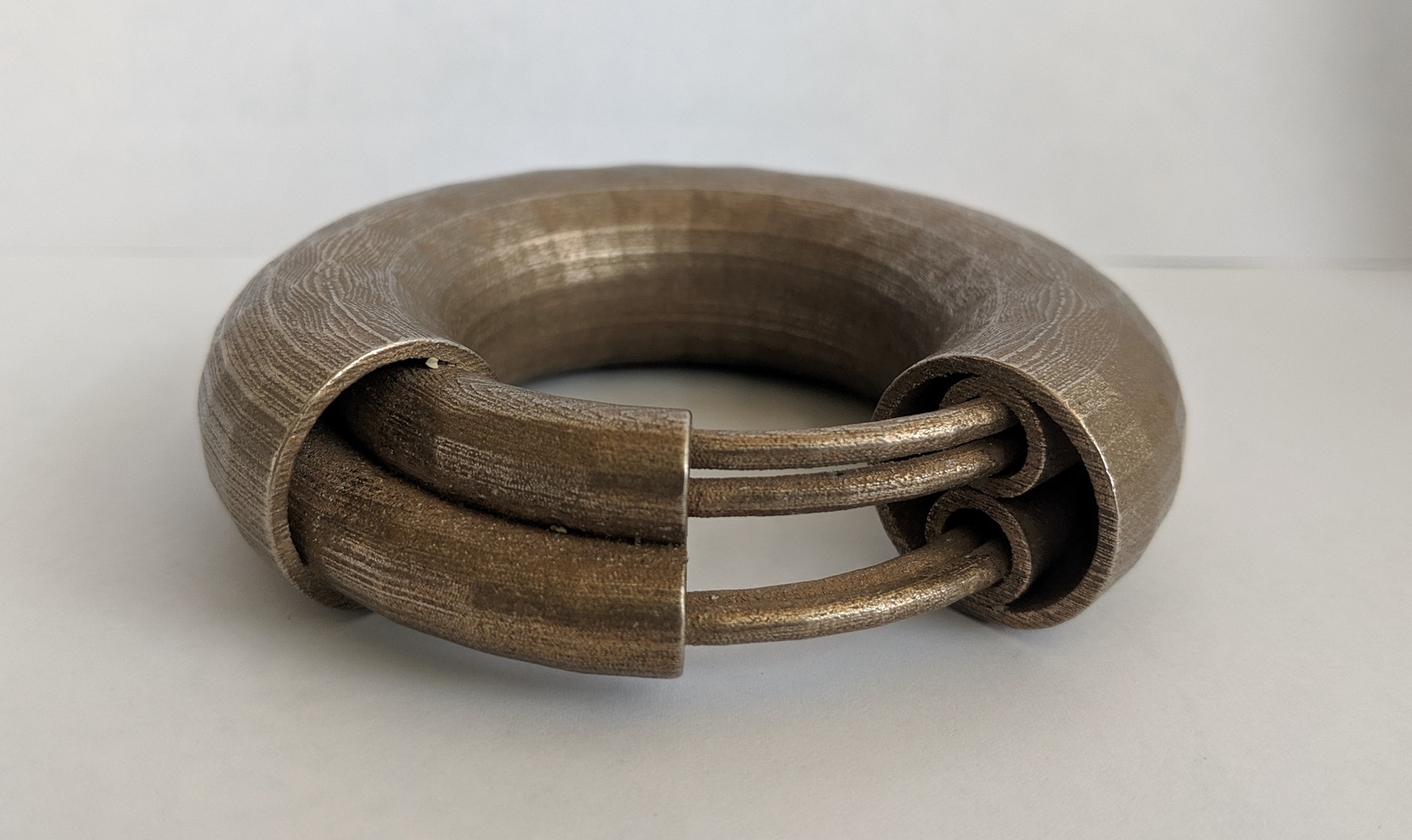 |
I fell in love with this mathematical object through one of Ian Putnam's C*-algebra problems. After, I started seeing the image of a 2-adic solenoid in many dynamical systems textbooks. I immediately wanted to be able to create a depiction of this object in the 3d world. Ian gave me access to resources that allowed me to model the object in Mathematica through a simple parametrization. I was able to print it in plastic fairly easily, but the ultimate goal was for it to become a metal paperweight. After a LOT of trial and error and so much frustration, Shapways finally accepted and printed the model for me. Here is my description of the object from ICERM's Illustrating Mathematics Art Exhibit. The 2-adic solenoid is quite the elusive pop star, featured on many covers of dynamical systems textbooks but rarely seen as a tangible object in our world. Fortunately, this piece can be held in the palm of your hand! It consists of three solid tori 3D printed in nickel, representing the geometric construction of the 2-adic solenoid. The second torus is stretched and wrapped inside the first, and the third is stretched, twice, and wrapped inside the second, the process can be repeated ad infinitum. The intersection of all transformed solid tori gives the solenoid. The cross-section of the piece shows a system of intersecting disks forming a Cantor set, illustrating the fact that locally, the solenoid is a Cantor set cross an interval. If you would like to purchase this model, go to my Shapeways shop: PolygonArt If you would like to 3d print this model, here is the stl file Solenoid The Mathematica file can be found on my git hub page polygonart6777 If you have no idea what this object is and would like some more information Grad Seminar Solenoid Talk |
|
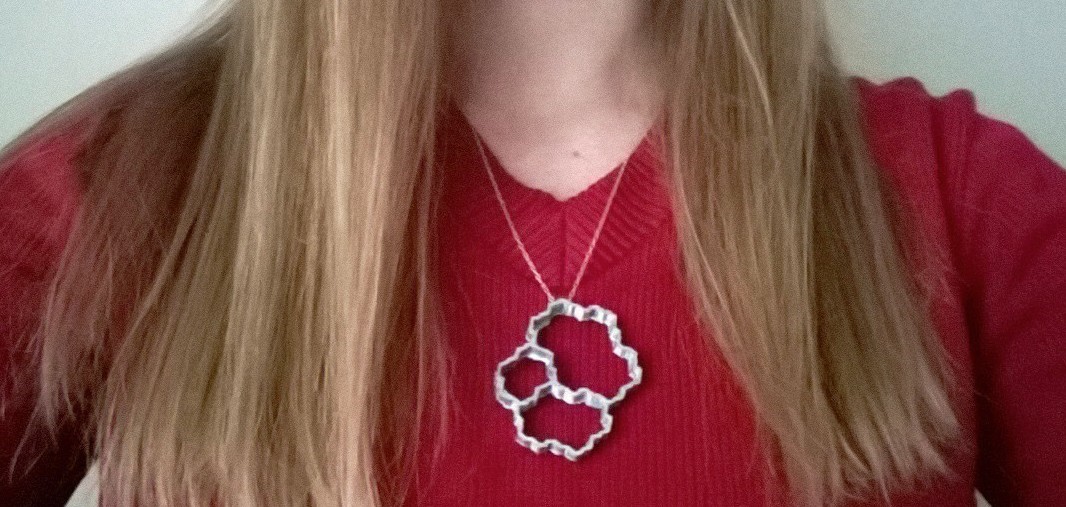 |
The Rauzy tiles are the reason I became interested in my phd thesis topic. They can tile the plane both periodically and aperiodically. I plotted the Rauzy tiles in Mathematica by using Rauzy's original defnition as well as the projection of the stepped staircase method. Once plotted, I used Inkscape to create a workable .svg file which was extruded in Blender (or TinkerCad) to create an .stl file for 3d printing.
If you would like to print/cut your own: STL file and SVG file The Mathematica file can be found on my git hub page polygonart6777 |
|
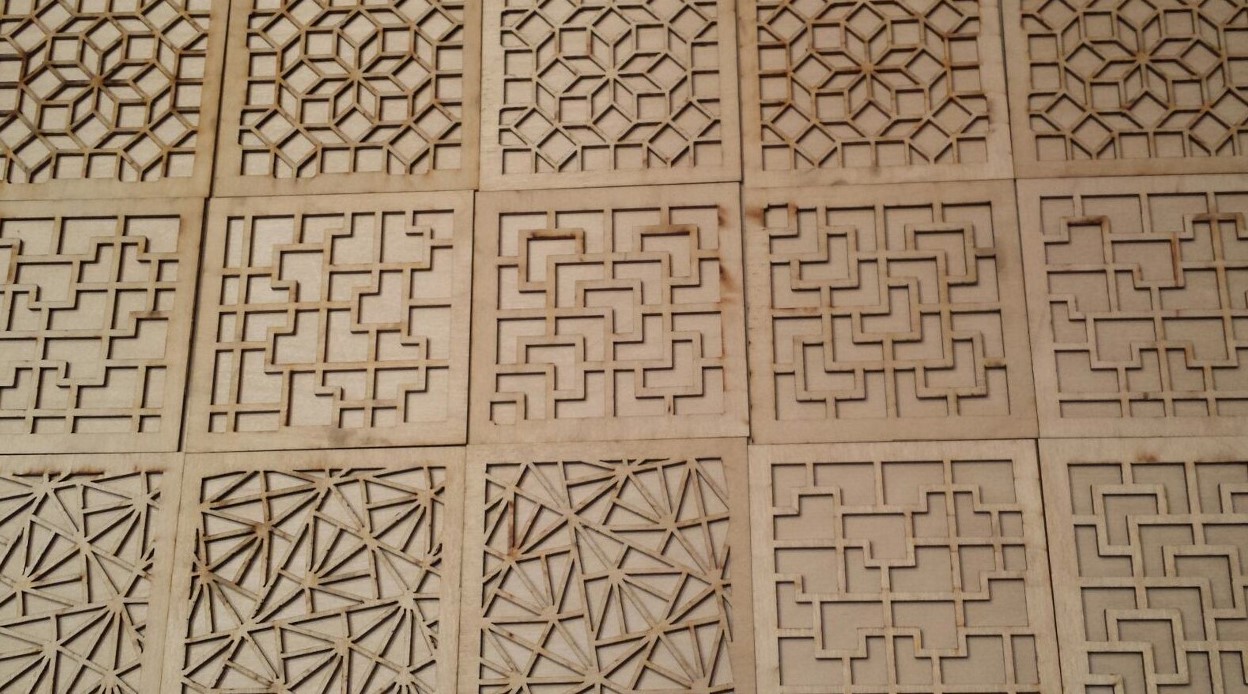 |
Studying aperiodic tiling spaces inspired me to create some aperiodic tiling coasters! I was imagining tilings which were so intricate that the coaster looked like lace. The main issue was the time to laser cut a coaster, I was charged per minute of use for a laser cutter. To make the coasters more affordable, I had to enlarge the tiles. Here you see several ''coasters'' of the pinwheel, chair, Ammann-Beenker tilings. But because these holes are so large, these coasters are pretty terrible at keeping your furniture protected. They sure are pretty though.
For more information about aperiodic tilings: Tilings Encyclopedia |
|
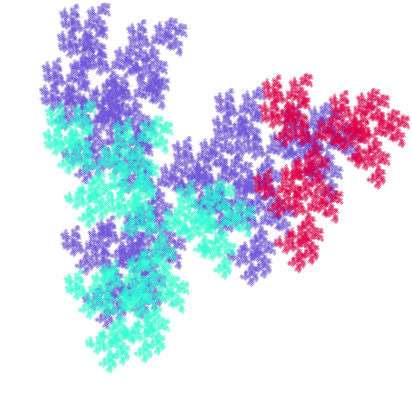 |
I've been pretty consumed with a map that my advisor and I constructed for my thesis. This map takes paths on finite directed graphs and creates fracta like sets from the set of all possible bi-infinite paths. To study these maps, I like to consider specific examples of graphs. In this particular case, I consider the Tribonacci graph. We know that for some special labels on the Tribonnaci graph we get transformations of the Rauzy fractal. For other labelings, we get Cantor sets. But, we really don't have a clear picture of what happens in general. Python has helped me visualize the scope of things, and the scope seems to be pretty wide. I thought it would be fun to create a twitter bot that gives a set for a random labeling of the edges each day. I'm hoping this might help me understand what is going on. If you have any idea, I would very much love to hear from you.
You can also follow the beautiuful pictures on: Follow @GraphTrib If you're curious about the mathematics behind the pictures Fractal like sets from labelings on the Tribonacci graph. The Python code can be found on my git hub polygonart6777 |
|
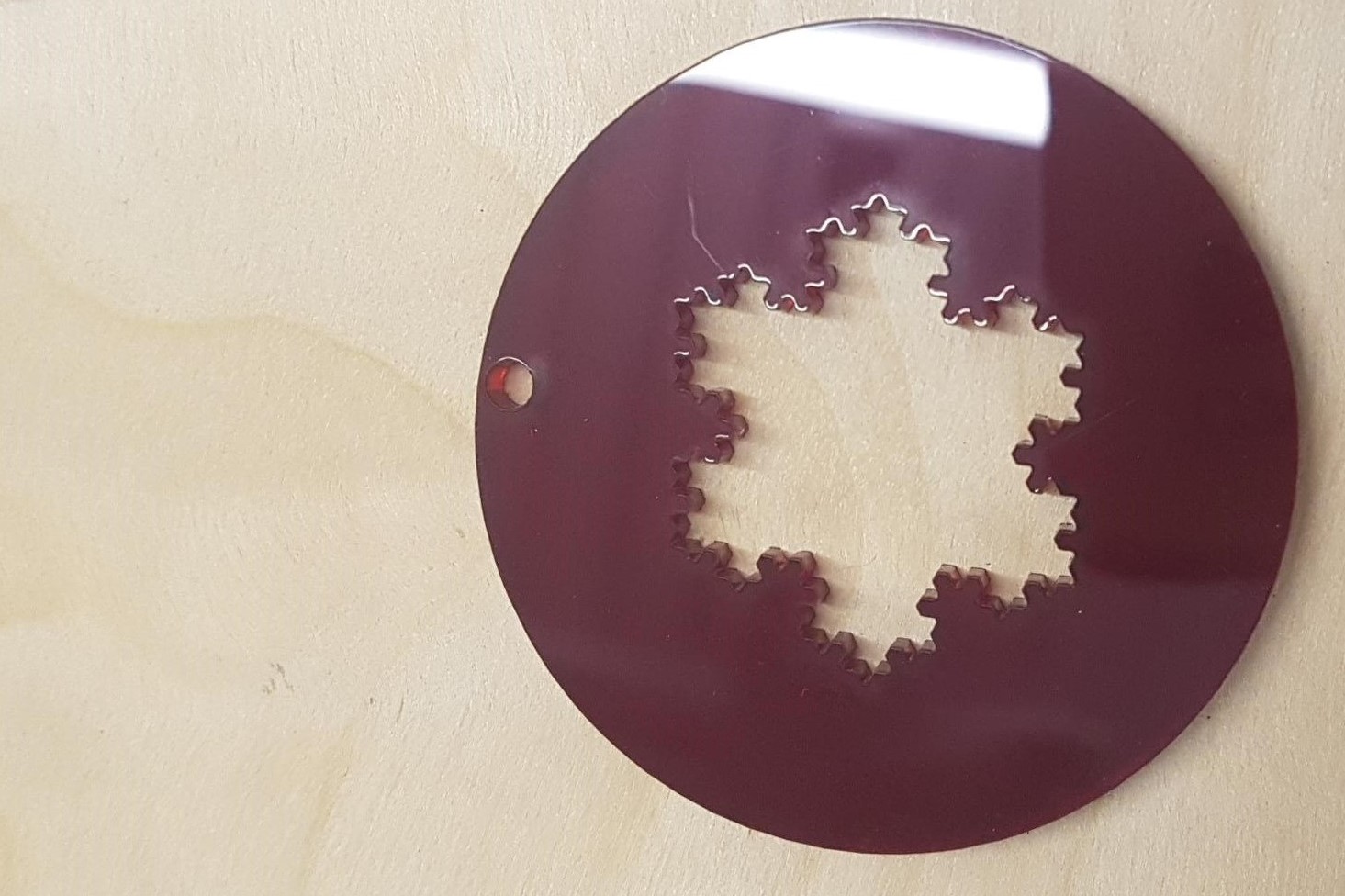 |
Students at the 2018 Canadian Mathematical Society's math camp at Camosun college made their own fractal key chains using the L-systems renderer in Inkscape. An L-System is a type of formal grammer and string rewriting systems. It consists of an alphabet of symbols that can be used to make strings, a collection of substitution rules that expand each symbol into a string of symbols and an axiom, i.e. starting point. Once a string is created, we use a mechanism called "Turtle Graphics" to turn the string into a visual image. Of course the L-systems renderer in Inkscape automates this and produces beautiful fractals quickly. Each student made their own fractal design, watched it being laser cut at Camosun's Innovates lab, and got to take their key chain home.
The lesson plan I used for the workshop: L-systems lesson plan. Some of the possibilities can be found here: Fractal examples from L-systems |
|
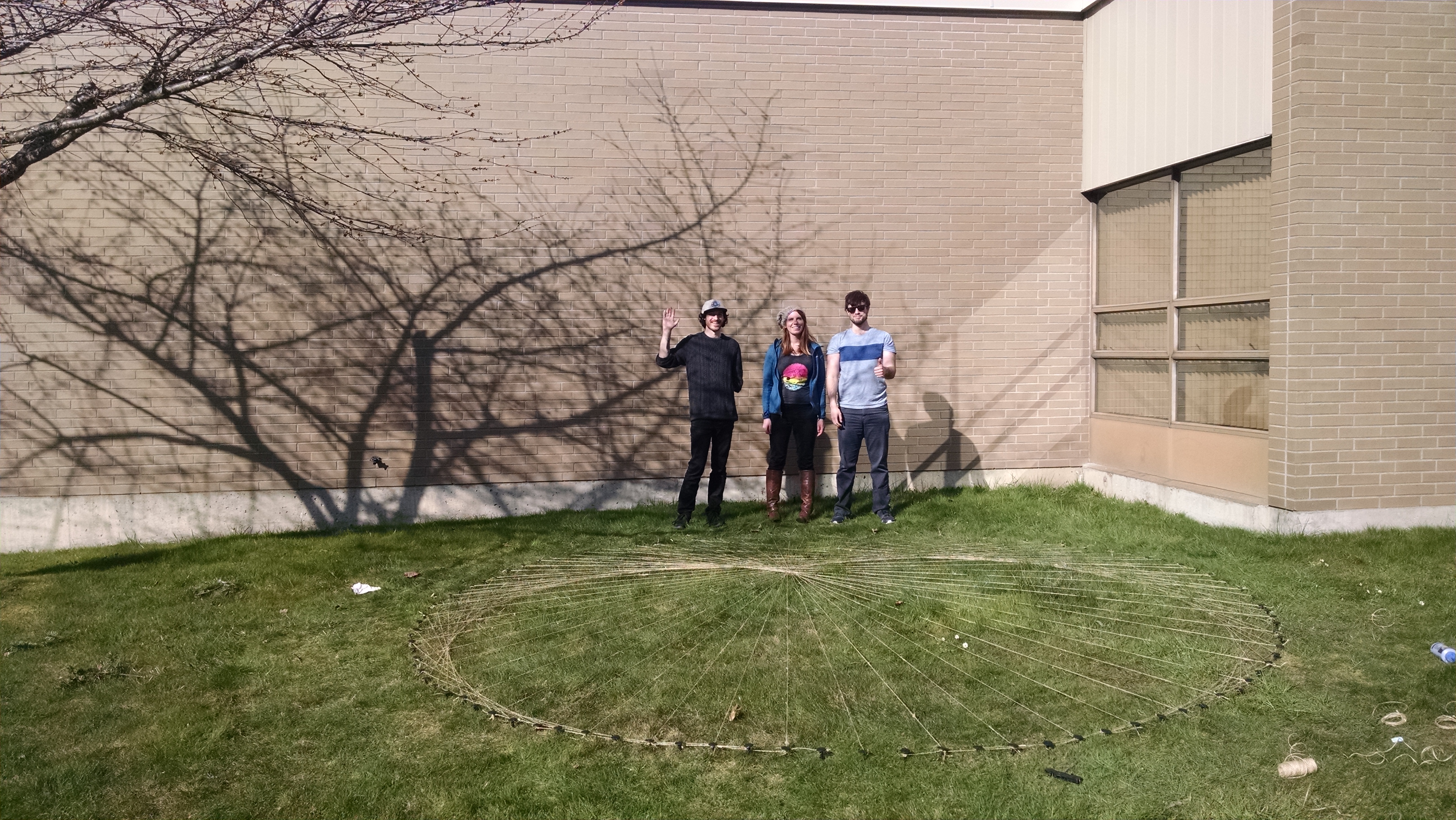 |
Every year the University of Victoria holds a week long festival of research, art, and innovation. In 2018, the art department decided to host a Math Garden at ideafest:
Conceived as an outdoor sculpture garden, works by ART 300 students and guest artists recall Mathematica, an exhibition of mathematical concepts by Charles and Ray Eames that debuted at the California Museum of Science and Industry in 1961. Wander between perspective projections and platonic solids. Check out didactic panels de-bunking the Golden Rectangle and explaining aspects of topology like minimal surfaces and the Möbius strip. Reflect on the visual aspects of geometry, linear algebra and graph theory. See what happens when artists make mathematics their muse. Tom Thompson (instructor at UVic) and I decided we would contribute by createing a large scale string art cardioid using garden pegs and string. The cardioid was created by first placing the 100 or so pegs in a circle. We picked a starting peg which we called numero uno, for position 1. Then we connected each of the pegs by the rule that a peg at position n would be connected to the peg at position 2n. I thought this would take us many hours to do, but it actually went by pretty quickly, it only took an hour to complete. |
|
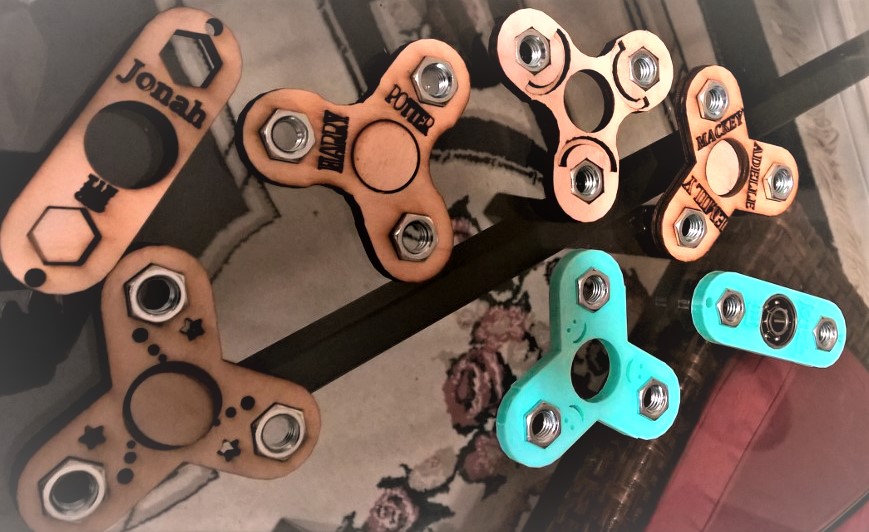 |
At the WWU Science Odyssey the "Calculating Artist" math camp middle school students designed their own fidget spinners in Tinkercad. Once their design was finished, they chose to either 3d print their design and export to an .stl file or laser cut their design and export to an .svg file. In the design process, students learned to create the correct size holes for ball bearings and weights, and how to use 3-fold or 2-fold rotation to speed up the design process. | |
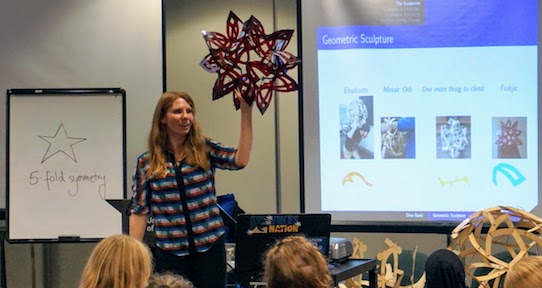 |
I went to one of George Hart's workshop in Portland for the first time in 2014. We put together his "orb" sculpture and I got to experience the magic of working together in a "barn raising" event. After the workshop, I couldn't wait to share this with my students and incorporate the activity within the Math and Art class. I emailed George Hart about how to get a hold of the pieces and to my surprise, he sent me the SVG file. The Western Industrial Design department was happy to let me use their laser cutter. We ended up putting it together at the math department picnic and it was a huge hit! I went through the activity with several math camps and groups such as Let's Talk Science at the University of Victoria. George Hart provides files on his website for anyone to use and laser cut their own sculpture. All of the sculptures I have created from George Hart's website have a symmetry group isomorphic to A5. The five intersecting tetrahedra is a great tool to use, especially when each of the tetrahedra are painted a different color, to show each of the elements of A5. The colors show the transpositions and which elements stay fixed. Great fun!
A talk I gave on the symmetries of the sculptures can be found here: Sculpture Talk |
|
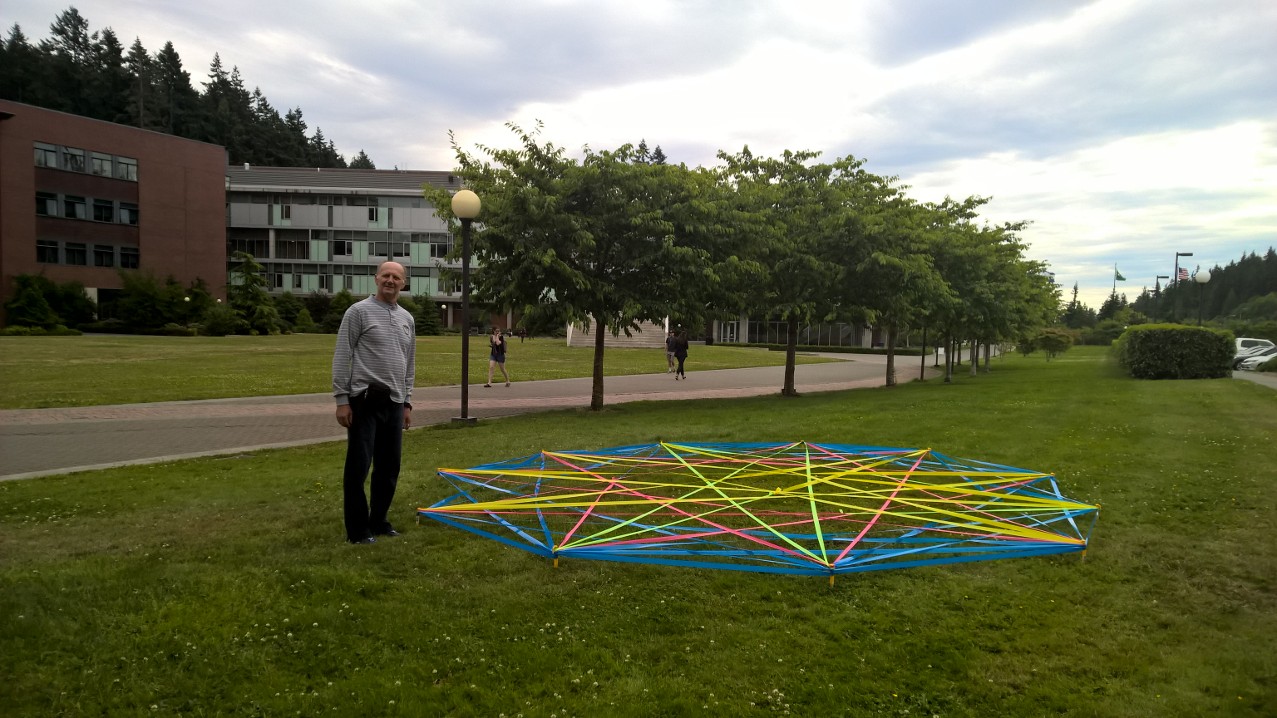 |
String artworks have always been really fun to make. It is fascinating to be able to get curves just by using straight lines. George Hart gave me the idea of doing these artworks on a large scale. I used star polygons and string art to investigate the handshaking problem with students in summer camps, math classes and even a workshop at the Integrate Arts festival in Victoria. The handshaking problem is so rich because it provides many different types of solutions that you can describe, draw and even act out! My dad is pictured on the left, helping me take down an installation the Science Odyssey students created at Western Washington University. Check out my string art animation page for more fun with families of lines. |